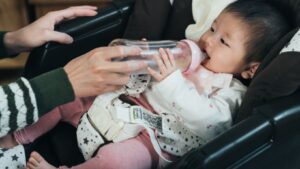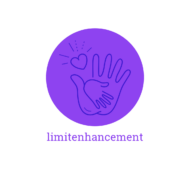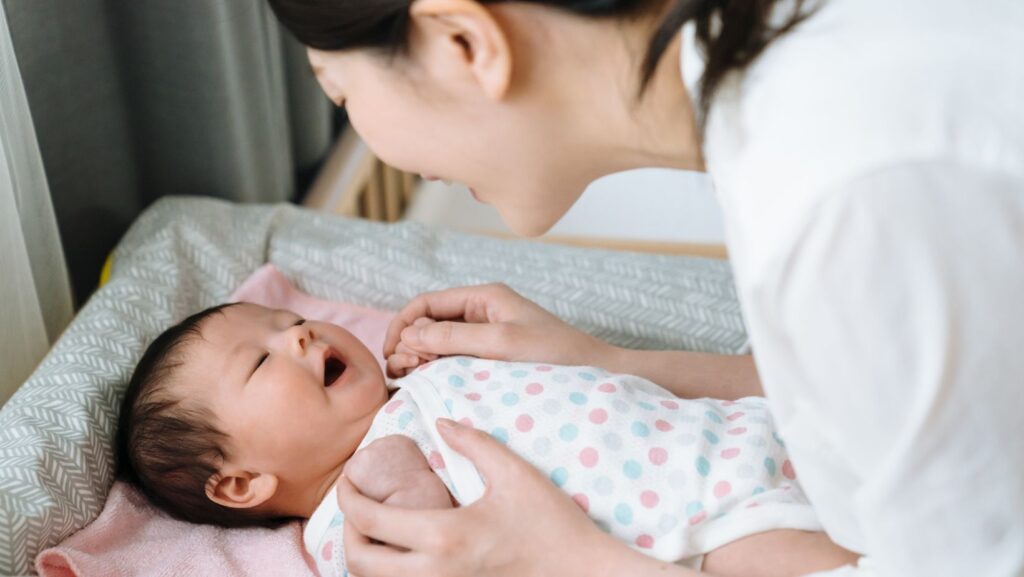As parents, we often find ourselves asking, When does toddlerhood end? It’s a phase filled with first steps, first words, and a whole lot of firsts that are as thrilling as they are challenging. But when does this roller-coaster ride of early childhood development come to a halt?
The transition from toddlerhood to childhood isn’t marked by a specific age or a particular milestone. It’s a gradual process that varies for each child. This article aims to shed some light on this intriguing phase of growth, helping parents understand when toddlerhood typically ends and how to navigate the journey. So, buckle up as we explore the end of toddlerhood, a significant turning point in your child’s life.
When Does Toddlerhood End
The Developmental Milestones
 It’s easy to spot developmental milestones that signal the transition from toddlerhood to childhood. One critical milestone includes language and speech refinement. Instead of speaking in three-word sentences, children start using more complex phrases and sentences. Additionally, cognitive skills like problem-solving and logical thinking become noticeable as children start dealing with problems without assistance. For instance, a child might figure out how to assemble a complex toy by themselves.
It’s easy to spot developmental milestones that signal the transition from toddlerhood to childhood. One critical milestone includes language and speech refinement. Instead of speaking in three-word sentences, children start using more complex phrases and sentences. Additionally, cognitive skills like problem-solving and logical thinking become noticeable as children start dealing with problems without assistance. For instance, a child might figure out how to assemble a complex toy by themselves.
Physical development exhibits significant changes too, with children gaining better control over their body movements. An example manifests in an improved ability to perform activities like hopping on one foot or tying shoelaces. In the realm of social and emotional development, children start establishing stronger relationships with their peers, showing acumen for teamwork and empathy.
Transitioning from Toddler to Childhood
Transitioning from toddlerhood to childhood isn’t an overnight process—it is a gradual transition marked by a combination of physical, cognitive, emotional, and social changes. Each child experiences this transition at a unique pace, and parents must be patient and supportive, providing an environment that allows for natural, well-paced growth.
For example, some children might start showing independence earlier than others. They might insist on dressing themselves or even resisting a midday nap. Furthermore, kids begin to develop a sense of right and wrong, showcasing moral development. This period, often bathed in curiosity, is also a time when many children begin to ask incessant questions about the world around them. Education plays a key role at this stage as most children start their formal schooling, signaled by an increase in learning and computational skills.
It’s vital parents maintain active involvement during this transition, guiding their children with patience, love, and understanding, facilitating their children’s journey from toddlerhood to childhood. This guidance can include encouraging their inquisitiveness, fostering independence, and instilling a sense of responsibility.
When Does Toddlerhood End?
Toddlerhood, a stage packed with rapid growth and exploration, generates curiosity in parents regarding its conclusion. This section unravels facts about the end of toddlerhood, shedding light on the typical age range, and evident behavioral and cognitive shifts.
Age Range for Toddlerhood
Ordinarily, toddlerhood manifests between the ages 1 and 3. As per the American Academy of Pediatrics, it’s a dynamic period marked by significant cognitive, emotional, and physical development. However, pinpointing a particular age for the termination of toddlerhood is quite elusive due to variances in individual children’s developmental rates. For instance, some children may commence the transition into early childhood as early as 2.5 years, while others might linger in their toddlerhood until they touch 4 years.
Behavioral and Cognitive Signs of Progression
 Identifying the end of toddlerhood doesn’t merely revolve around counting birthdays. It’s equally about the emergence of certain cognitive and behavioral signs.
Identifying the end of toddlerhood doesn’t merely revolve around counting birthdays. It’s equally about the emergence of certain cognitive and behavioral signs.
Increased self-reliance signifies one such development. Toddlers gradually start performing simple tasks, like dressing, without assistance. Their vocabularies expand, and they construct more intricate sentences, indicating improved language and communication skills.
Cognitively, toddlers exhibit mounting curiosity and a heightened sense of imagination. They participate actively in pretend play, showcasing their budding understanding of the world. A marked enhancement in problem-solving capabilities also signals the nearing end of toddlerhood. Specialists observe that toddlers transitioning into early childhood start asking thought-provoking questions, portraying an incessantly inquisitive mind.
Consequently, the cessation of toddlerhood cannot be boxed into a fixed age range or milestone. Its denouement blends behavioral, cognitive, and emotional development, leading to the magnificent dawn of early childhood.

